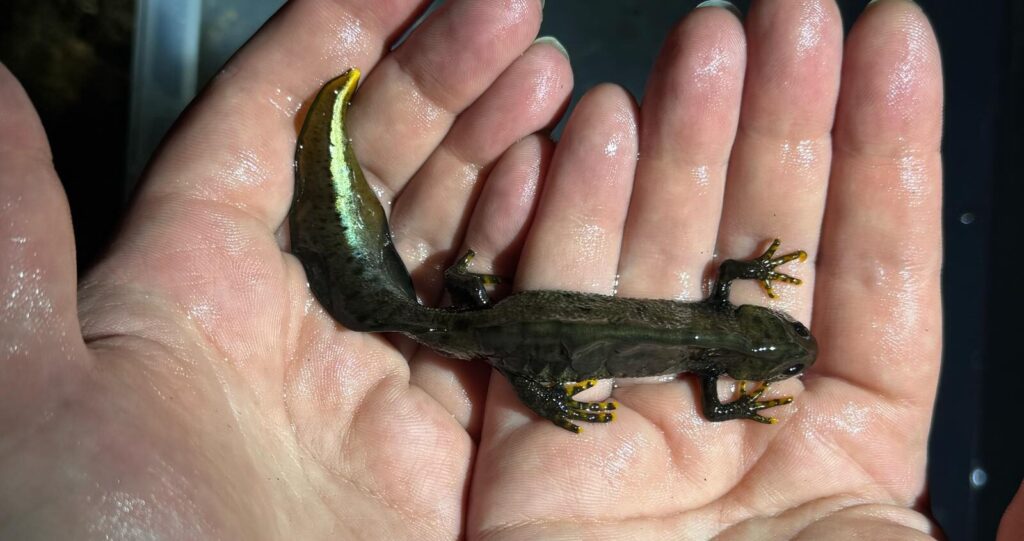What is eDNA Testing?
Environmental DNA (eDNA) testing is a scientific method used to detect genetic material from organisms in their surroundings, such as water, soil, or air. Instead of directly observing or capturing species, researchers analyse traces of DNA shed through skin, scales, faeces, or bodily fluids.
This non-invasive technique is widely used in biodiversity monitoring, conservation, and detecting invasive or endangered species. eDNA testing is particularly valuable in aquatic environments, where traditional survey methods can be time-consuming and disruptive. It also allows for early detection of species that might otherwise go unnoticed.
eDNA Testing for Great Crested Newts
The great crested newt (Triturus cristatus) is an ecologically significant species, protected under UK legislation. As a result, developers and planners must carefully consider their presence when undertaking projects that could impact their habitats. Environmental DNA – eDNA testing for Great Crested Newts is a highly effective, non-invasive method for detection of Great Crested Newts in aquatic environments, making it a crucial tool in ecological assessments.
eDNA-based testing for great crested newts is nationally recognised as an approved methodology for ecological impact assessments in the planning and development sector. This approach enables efficient, accurate, and cost-effective monitoring, reducing the need for extensive field surveys while ensuring compliance with environmental regulations.
Testing Period for Great Crested Newts
The great crested newt eDNA testing period in the UK runs from mid-April to the end of June. This timeframe aligns with the species’ breeding season when they are most active in ponds, ensuring the highest accuracy in detecting their presence through eDNA analysis.

Contact Us for eDNA Testing:
If you require eDNA testing for great crested newts or need expert advice on ecological assessments, our team at ProHort Ltd is here to help. Get in touch with us today to discuss your project requirements and ensure compliance with environmental regulations. Contact us via phone or email.

